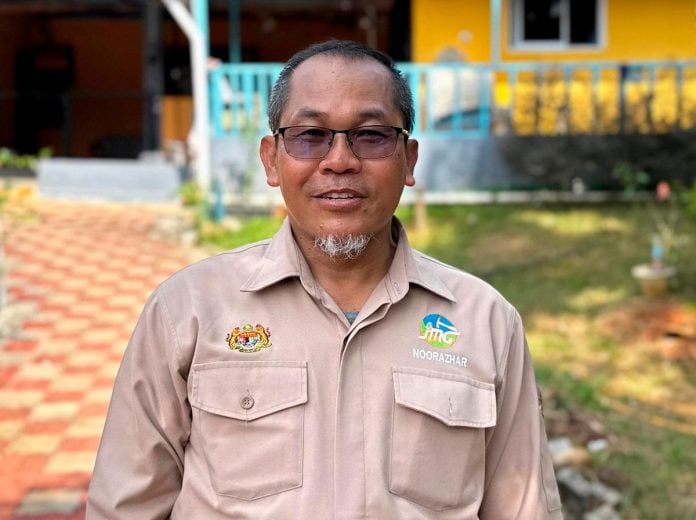SEGAMAT: The Johor Minerals and Geosciences Department has not ruled out recent tremors as potential factors behind ground cracks appearing at several locations in the district.
Department director Noorazhar Ngatimin emphasised that thorough analysis remains necessary before reaching any definitive conclusions about the crack formations.
Initial inspections using resistivity-type geophysical equipment provided only basic overviews of subsurface conditions regarding soil type, thickness, and crack structures.
“Initial data obtained from the resistivity study only provides a basic overview,“ Noorazhar stated during his visit to a resident’s farm in Jalan Buloh Kasap.
Further analysis involving wider area coverage and additional observations in different directions will be required for comprehensive understanding.
Other studies including tremor strength assessment will help determine the actual cause behind these geological developments.
Resident Ramlah Ishak reported cracks forming on her farm ground behind the house following the 7.29am tremor yesterday.
Current dry weather conditions might have contributed to ground crack formations alongside other geological factors.
“Ground cracks can form due to weather changes, such as soil shrinkage during the dry season,“ Noorazhar explained.
The underlying geology of the area must be considered collectively with other factors when determining causation.
Johor JMG plans to bring in a technical team for more in-depth studies using additional equipment from local universities.
Findings will determine whether existing geological and seismic maps require updating due to observed ancient fault line reactivation signs.
“However, this area remains safe,“ Noorazhar assured residents regarding current seismic activity levels.
MetMalaysia data confirms Segamat remains within a weak magnitude zone posing no immediate threat to life.
Researchers from Johor JMG, MetMalaysia, and Universiti Teknologi Malaysia conducted initial investigations at the site for over an hour. – Bernama








